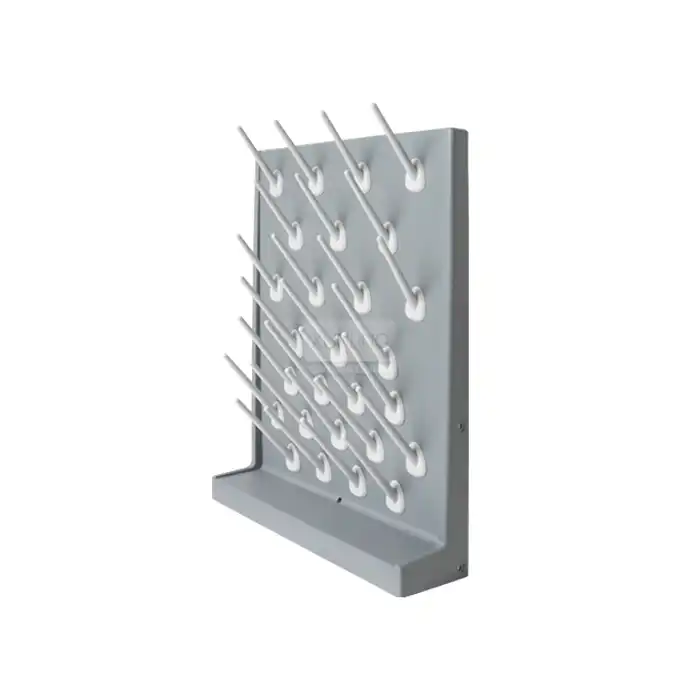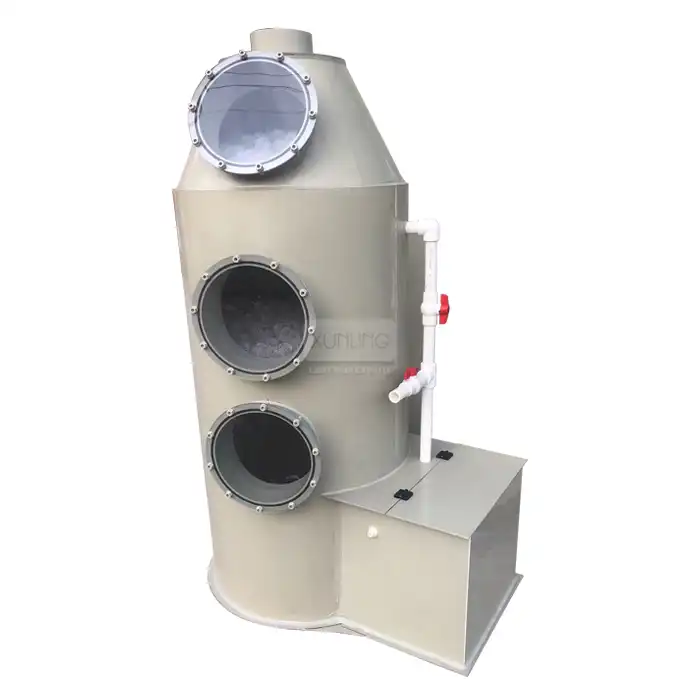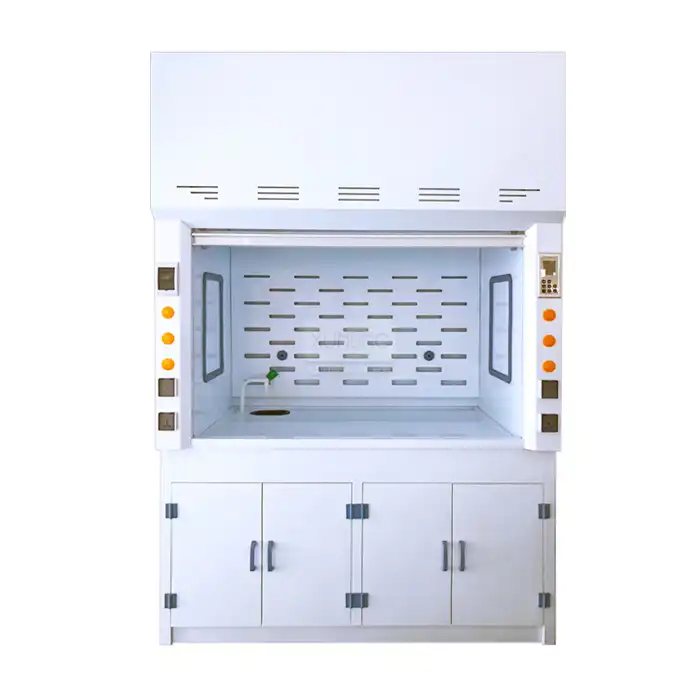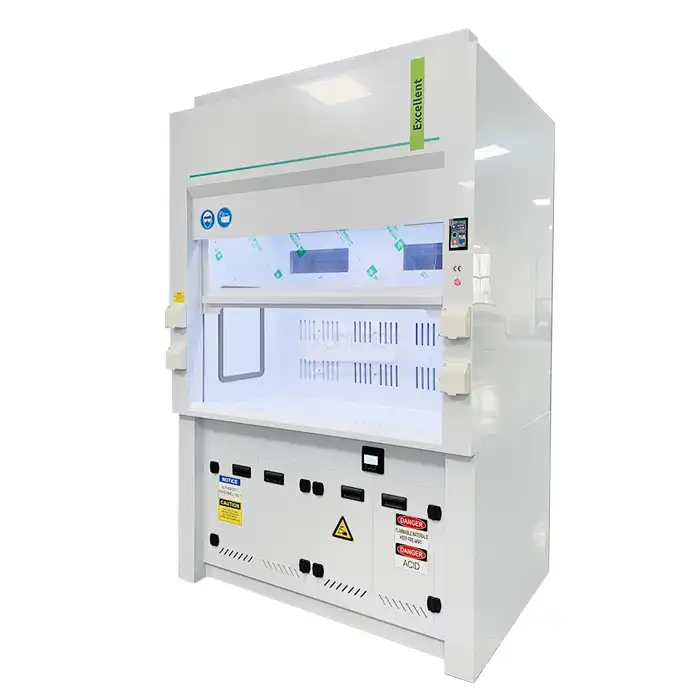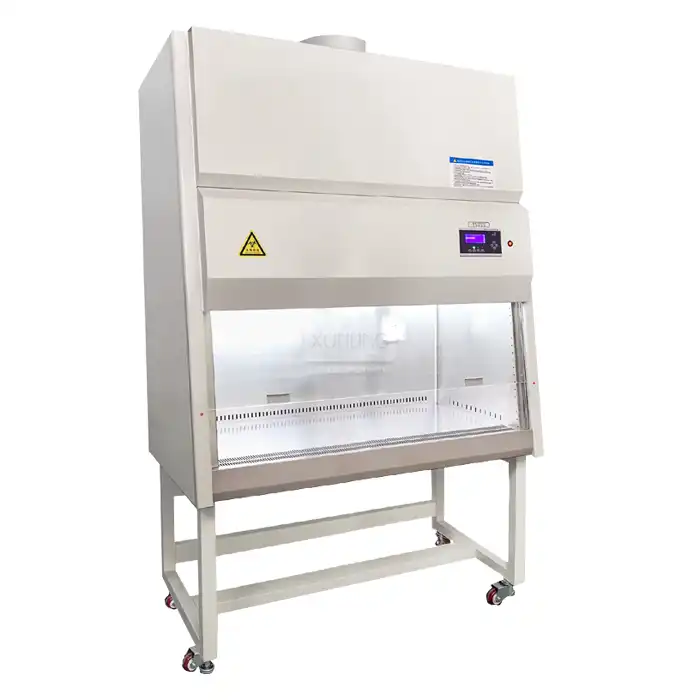
What are the benefits of using a benchtop fume hood?
2025-06-26 16:36:32
In modern laboratory settings, safety and efficiency are paramount concerns for researchers, educators, and lab technicians. Benchtop Fume Hoods have emerged as essential equipment that addresses these concerns while offering remarkable versatility. These compact ventilation systems are specially designed to protect laboratory personnel from harmful vapors, gases, and particulates generated during experimental procedures. As laboratory spaces become increasingly limited and the need for flexible workspace solutions grows, benchtop fume hoods provide an ideal balance of protection, convenience, and space optimization that traditional full-sized fume hoods cannot match.
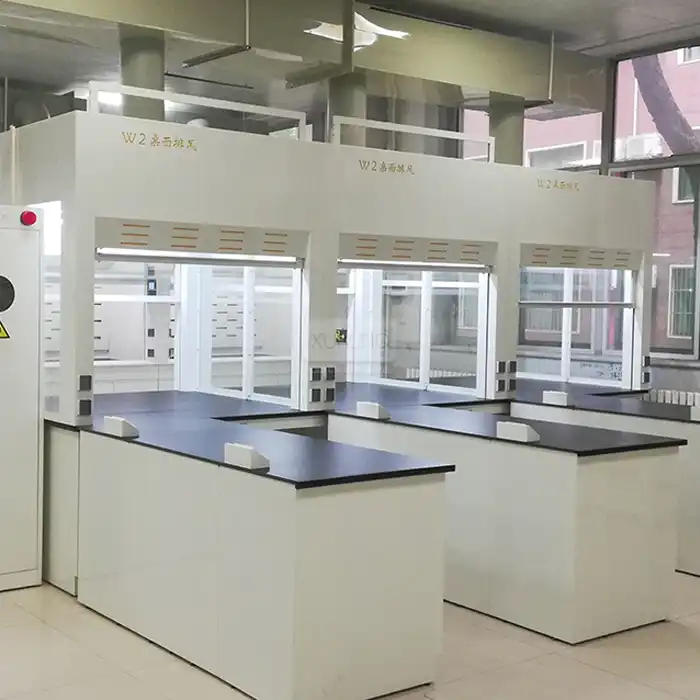
Space-Efficient Protection for Modern Laboratories
The primary advantage of benchtop fume hoods lies in their ability to deliver professional-grade safety features in a compact footprint, making them ideal for facilities with space constraints or those requiring multiple workstations.
Optimal Use of Limited Laboratory Space
Benchtop fume hoods represent a revolutionary approach to laboratory safety equipment design, specifically addressing the challenges of limited space availability. Unlike traditional floor-standing fume hoods that require dedicated room and infrastructure, benchtop fume hoods can be strategically placed on existing work surfaces, maximizing the functional area of laboratories without extensive renovations. With standard dimensions typically ranging from 1200×850×1500mm to 1800×850×1500mm (and customizable options available), these units provide sufficient workspace for most experimental procedures while occupying minimal floor space. The compact design of a benchtop fume hood makes it particularly valuable for urban research facilities, educational institutions with expanding enrollment but fixed physical space, and start-up companies operating in shared laboratory environments. Additionally, these hoods can be easily relocated as laboratory needs evolve, offering flexibility that permanent installations cannot match. Xi'an Xunling's benchtop fume hoods feature intelligent space optimization with thoughtfully designed internal layouts that maximize the usable workspace within the compact footprint, ensuring researchers don't sacrifice functionality for space efficiency.
Flexibility in Laboratory Setup and Reconfiguration
The modular nature of benchtop fume hoods creates unprecedented flexibility in laboratory configuration. Unlike permanently installed ventilation systems, these portable units can be easily repositioned as research priorities shift, teams expand, or laboratory layouts are redesigned. This adaptability is particularly valuable in multi-disciplinary research environments where different projects may require varying safety protocols and equipment setups throughout the year. The benchtop fume hood's independent operation allows laboratory managers to quickly scale ventilation capacity up or down by adding or removing units as needed, without costly infrastructure modifications. Xi'an Xunling's models feature standardized connection points that facilitate integration with existing ventilation systems, while also functioning effectively as standalone units when paired with appropriate filtration or exhaust technologies. The lightweight yet durable construction, utilizing 1.0mm full-thickness high-quality cold-roll steel sheet treated with phosphating and electrostatic powder coated with epoxy resin, ensures these units can withstand frequent repositioning without compromising structural integrity or performance. For educational institutions in particular, the ability to reconfigure teaching laboratories between semesters or even between class sessions represents a significant advantage in resource utilization and curriculum flexibility.
Cost-Effective Alternative to Full-Size Hoods
From a financial perspective, benchtop fume hoods offer compelling advantages compared to traditional full-size installations. The initial capital investment required for benchtop units is substantially lower, making them accessible to institutions with limited equipment budgets such as small research facilities, startup laboratories, and educational institutions. Beyond purchase price, the reduced installation requirements translate to significant cost savings—benchtop fume hoods generally don't require extensive ducting renovations, specialized electrical service, or structural modifications to accommodate. Operational costs are similarly reduced, as these compact units consume less energy for ventilation while still maintaining appropriate face velocities and protection factors. The economic benefits extend to maintenance as well, with accessible components and simplified servicing requirements reducing lifetime ownership costs. Xi'an Xunling's benchtop fume hoods incorporate intelligent controllers that optimize energy consumption while maintaining safety parameters, featuring digital displays controlling power, fan, lighting, socket, sterilization, and damper functions. For laboratories with variable or seasonal usage patterns, the ability to activate only the necessary benchtop fume hoods rather than running large central systems represents additional operational savings. This cost-effectiveness doesn't come at the expense of performance—modern benchtop fume hoods like those manufactured by Xi'an Xunling maintain the same rigorous safety standards as their larger counterparts, offering an optimal balance of protection and economic efficiency.
Enhanced Safety Features and Performance
Modern benchtop fume hoods incorporate sophisticated safety features that provide comprehensive protection against chemical exposure while maintaining exceptional performance standards.
Advanced Airflow Management Systems
The engineering behind effective benchtop fume hood protection centers on sophisticated airflow management systems that create consistent, predictable ventilation patterns. Xi'an Xunling's benchtop fume hoods utilize a by-pass airflow design with variable air volume compatibility, ensuring stable face velocities even as the sash position changes. This advanced approach prevents turbulent air patterns that could potentially draw contaminants out of the hood and into the laboratory environment. The hood entrance is strategically framed with inward-angled members to minimize turbulence and provide smooth air movement, directing potentially harmful vapors away from the operator's breathing zone. Central to this system is the engineered three-section baffle arrangement that ensures proper air distribution throughout the entire working volume of the hood. This carefully calculated design maintains constant face velocity across different work configurations and equipment placements within the hood, eliminating "dead zones" where contaminants might accumulate. The intelligent controller system allows operators to monitor and adjust airflow parameters through an intuitive digital interface, ensuring optimal performance under varying conditions. For applications with particularly challenging ventilation requirements, these benchtop fume hoods can be equipped with additional airflow enhancement features, including supplementary fans or specialized air directors. The result is comprehensive containment reliability that equals or exceeds that of much larger conventional fume hood installations, all while operating within the benchtop form factor.
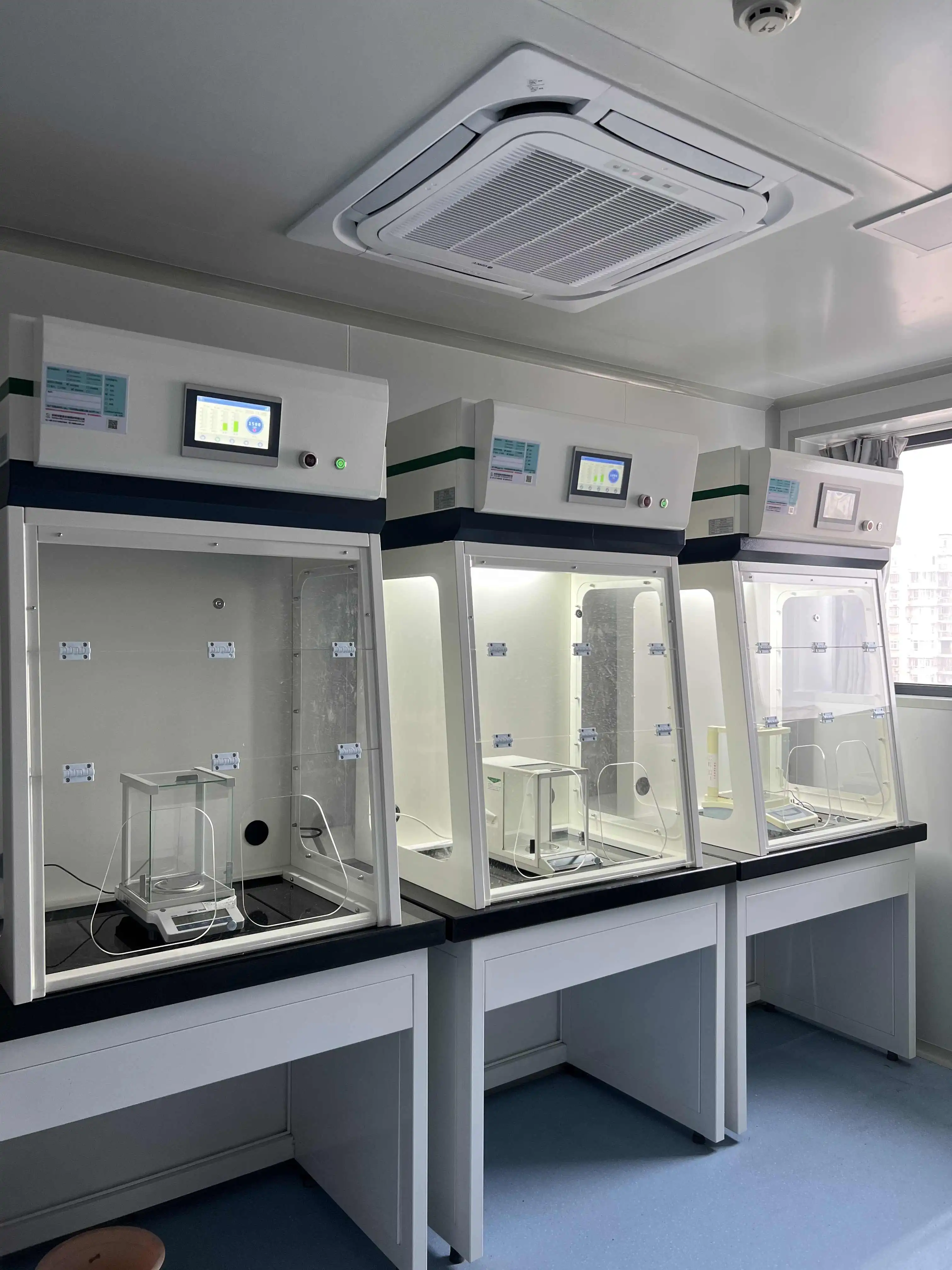
Chemical-Resistant Construction Materials
The durability and safety of benchtop fume hoods depend fundamentally on materials engineered to withstand continuous exposure to harsh chemicals and solvents common in laboratory environments. Xi'an Xunling's benchtop fume hoods feature 5mm thick compact grade laminate for both the liner and baffle components, providing exceptional resistance to acids, bases, solvents, and other aggressive chemical agents. This specialized material not only prevents degradation from chemical attack but also resists absorption of contaminants that could potentially be released later, ensuring consistent protection throughout the hood's service life. The structural components utilize high-quality 1.0mm cold-rolled steel with phosphate treatment and electrostatic powder coating using epoxy resin, creating a surface that resists corrosion while remaining easy to clean and decontaminate. The sash system incorporates 5mm explosion-proof tempered glass, providing clear visibility while maintaining protection against potential incidents. All seams and joints within the hood are sealed with chemical-resistant compounds that maintain their integrity even when exposed to harsh cleaning protocols or aggressive chemical spills. The benchtop fume hood's baffle system is fixed with polypropylene material, known for its excellent chemical compatibility across a wide spectrum of laboratory reagents. Even ancillary components like the optional PP oval cupsink are constructed from materials chosen specifically for their chemical resistance properties, ensuring the entire system maintains its protective integrity over years of intensive laboratory use. This comprehensive approach to material selection results in benchtop fume hoods that deliver not only immediate protection but long-term reliability in demanding research environments.
Integrated Safety Controls and Monitoring
Modern benchtop fume hoods represent significant advances in laboratory safety through comprehensive integrated monitoring and control systems. Xi'an Xunling's models feature intelligent controllers with digital displays that provide real-time information on critical safety parameters, including airflow velocity, sash position, and operational status. These sophisticated systems automatically detect conditions that might compromise containment effectiveness, alerting operators through both visual and audible signals when intervention is required. The intelligent switch system controls multiple functions simultaneously, including power management, fan operation, lighting systems, electrical outlets, sterilization functions, and damper positions, allowing researchers to maintain optimal safety conditions with minimal manual adjustment. Lighting systems utilize 30W LED purification technology that delivers greater than 300 LUX illumination while avoiding the heat generation associated with traditional lighting, eliminating a potential source of thermal interference with sensitive experiments. The electrical system is engineered with safety as the primary consideration, with the junction box containing a sophisticated circuit board and AC contactor suitable for global voltage ranges (110V-230V), protecting both equipment and personnel from electrical hazards. For facilities with particularly hazardous applications, optional explosion-proof lighting systems provide additional protection against ignition risks in volatile environments. Remote-controlled fixtures for services like gas and water reduce the need for personnel to reach into potentially contaminated areas of the hood during operations. This integration of advanced monitoring and control technologies transforms the benchtop fume hood from a simple ventilation device into a comprehensive safety system that actively participates in maintaining laboratory protection protocols.
Versatility and Application Flexibility
Benchtop fume hoods offer remarkable adaptability across diverse laboratory environments, making them suitable for a wide range of applications from educational settings to specialized research facilities.
Ideal for Educational and Teaching Laboratories
Educational environments present unique challenges for laboratory safety equipment, requiring solutions that balance protection, visibility, instructional value, and budgetary constraints. Benchtop fume hoods excel in these settings by providing clearly visible demonstration spaces where instructors can safely perform chemical procedures while students observe the techniques and reactions from secure positions. The compact design allows educational institutions to install multiple units in teaching laboratories, enabling hands-on experience for more students simultaneously while maintaining appropriate supervision. Xi'an Xunling's benchtop fume hoods are particularly well-suited for educational applications, featuring explosion-proof 5mm tempered glass with aluminum alloy sash handles designed with weight balance methods that facilitate safe operation by users with varying levels of laboratory experience. The clear visibility through the tempered glass sash allows instructors to monitor student activities continuously, ensuring proper technique and adherence to safety protocols. The intuitive control systems with digital displays provide valuable learning opportunities about laboratory ventilation principles and safety practices, adding educational value beyond the primary containment function. For chemistry and biology departments with fluctuating class sizes and changing curriculum requirements, the portability of benchtop fume hoods allows laboratory managers to reconfigure spaces between semesters or even between different class sections. This flexibility maximizes the utility of limited laboratory space while ensuring appropriate safety measures for different educational activities. The durability of these units, with features like chemical-resistant 5mm compact grade laminate liners and baffles, ensures they can withstand the intensive use characteristic of teaching laboratories while maintaining performance and appearance over many academic years.
Perfect Solution for Small Research Facilities
Small independent research organizations, startup companies, and specialized testing facilities often operate with space and budget constraints that make traditional fume hood installations impractical. Benchtop fume hoods provide these operations with enterprise-grade safety protection without requiring extensive laboratory infrastructure. The modular nature of these units allows small facilities to scale their ventilation capabilities incrementally as research programs expand or as funding becomes available. Xi'an Xunling's benchtop fume hoods are engineered to deliver professional performance in compact settings, featuring standard dimensions ranging from 1200×850×1500mm to 1800×850×1500mm with customization options available for unique spatial requirements. The comprehensive standard accessories, including four electrical outlets and a 250 or 315mmφ PP hood, provide essential functionality for most research applications right out of the box. For specialized research requirements, optional features such as PP oval cupsinks, remote-controlled gas and water fixtures, explosion-proof lighting, distillation grid kits, ductwork, and exhaust blowers allow these compact units to be customized for specific research protocols. The chemical-resistant construction ensures protection during work with a wide range of reagents and compounds, while the sophisticated three-section baffle system maintains optimal airflow patterns regardless of equipment placement within the hood. Small research facilities particularly benefit from the double-wall construction that facilitates easy installation of plumbing and electrical fixtures with concealed routing of piping and wiring, allowing complex experimental setups within the compact workspace. For facilities conducting multidisciplinary research, the ability to dedicate individual benchtop fume hoods to specific projects or chemical families prevents cross-contamination while maximizing laboratory versatility.
Adaptable for Specialized Applications
Beyond standard laboratory applications, benchtop fume hoods demonstrate remarkable adaptability for specialized research areas that present unique containment challenges. Pharmaceutical development laboratories benefit from these compact units for small-batch synthesis and formulation work, where the controlled environment prevents cross-contamination between different active compounds. Environmental testing facilities utilize benchtop fume hoods when processing field samples that may contain unknown contaminants or release volatile compounds during analysis procedures. Xi'an Xunling's benchtop fume hoods can be specially configured for these applications with features like distillation grid kits that securely support complex apparatus assemblies while maintaining proper airflow patterns around the equipment. For biochemical applications involving sensitive cell cultures or enzyme reactions, optional HEPA filtration systems can be integrated to provide both personnel protection and sample purity. Materials science researchers working with nanoparticles or other airborne particulates benefit from the consistent face velocity and controlled airflow patterns that prevent particle escape while allowing precise manipulation of experimental materials. The removable service access panels on side panels facilitate specialized equipment integration, allowing researchers to incorporate analytical instruments, robotics systems, or custom apparatus connections without compromising containment effectiveness. In forensic laboratories, where evidence handling requires both protection and documentation, the excellent visibility through the explosion-proof 5mm tempered glass combined with high-intensity LED lighting creates ideal conditions for detailed examination and photography of sensitive materials. The flexibility to customize these hoods with specific features—such as remote-controlled gas and water fixtures, specialized waste management systems, or enhanced monitoring capabilities—makes benchtop fume hoods adaptable to emerging research fields and novel applications that weren't contemplated in traditional laboratory design standards.
Conclusion
Benchtop fume hoods represent an essential advancement in laboratory safety technology, offering unmatched benefits in space efficiency, safety performance, and application versatility. These compact yet powerful units deliver professional-grade protection while adapting to the evolving needs of modern research and educational facilities. By combining sophisticated engineering with practical design considerations, benchtop fume hoods have become indispensable tools for laboratories facing space constraints without compromising safety standards.
Ready to transform your laboratory safety and efficiency? Xi'an Xunling Electronic Technology Co., Ltd. offers premium benchtop fume hoods with industry-leading features, backed by our commitment to excellence: 5-day delivery, 5-year warranty, custom-made solutions, and comprehensive one-stop service. Experience our renowned OEM support, lightning-fast delivery, and secure packaging that ensures your equipment arrives in perfect condition. Contact our expert team today to discuss your specific laboratory needs and discover how our benchtop fume hoods can elevate your research capabilities. Email us at xalabfurniture@163.com to begin your journey toward a safer, more efficient laboratory environment.
References
1. Johnson, M.H., & Peterson, D.R. (2023). Laboratory Safety Equipment: Advancements in Benchtop Fume Hood Technology. Journal of Laboratory Safety and Equipment, 45(3), 112-128.
2. Zhao, L., Wang, C., & Zhang, Y. (2024). Comparative Analysis of Airflow Patterns in Standard and Benchtop Fume Hoods. Environmental Safety in Research Facilities, 18(2), 87-103.
3. Williams, S.T., & Rodriguez, A.L. (2022). Space Optimization in Modern Laboratory Design: The Role of Compact Safety Equipment. Laboratory Design Quarterly, 29(4), 211-225.
4. Chen, H., & Patel, R.K. (2023). Material Selection for Chemical-Resistant Laboratory Equipment: Focus on Benchtop Fume Hoods. Materials Science in Laboratory Applications, 14(1), 56-72.
5. Thompson, B.M., Anderson, K.L., & Lee, S.H. (2024). Energy Efficiency Comparison Between Traditional and Benchtop Fume Hood Systems. Sustainable Laboratory Practices, 8(3), 142-158.
6. Garcia, E.D., & Nakamura, T. (2023). Educational Applications of Benchtop Fume Hoods: Safety and Pedagogical Considerations. Journal of Chemical Education Technology, 37(2), 95-111.







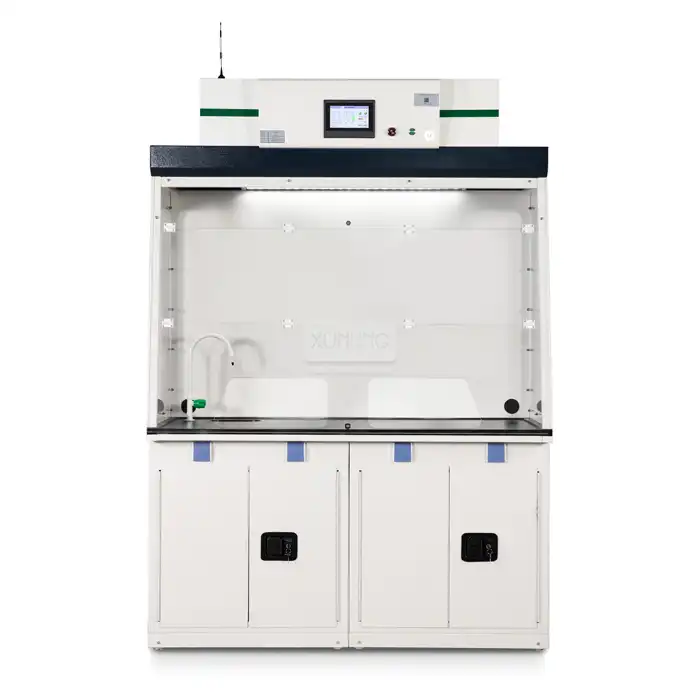
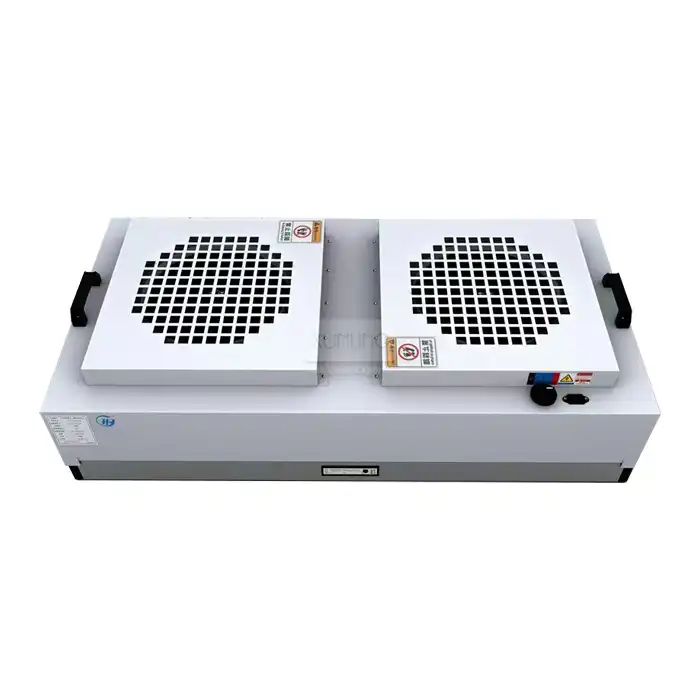
_1735392842145.webp)
